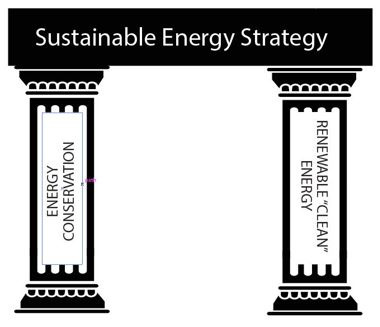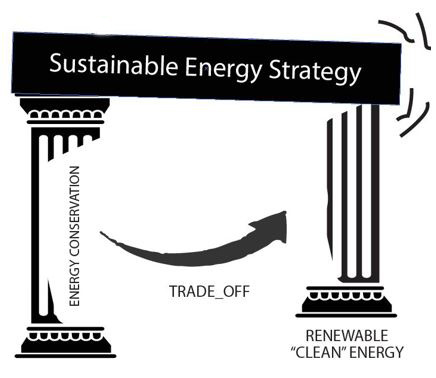In a companion article (please read “What Are the Pillars of a Sustainable Building Future?” first before reading on), the essence of energy conservation and renewable energy and their importance to achieve a common goal of a sustainable energy strategy were discussed. That companion article establishes some important background information and terminology for understanding this article, which addresses three important and related questions:
- What is the common goal of a “sustainable energy strategy”?
- How should energy conservation and renewable energy work together for this common goal?
- What are the considerations and challenges that need to be assessed so that they work well together?
A major benchmark is net-zero energy ready performance. This is best achieved by creating a building that is very efficient in conserving energy first. Then we can add a reasonably sized on-site renewable energy system, such as roof-top solar panels, where the goal is to generate at least as much energy as the building uses on average. This also includes the need to use supplemental, conventionally-purchased non-renewable energy or provide for onsite renewable energy storage to fill in for periods of low on-site power generation or high energy demand. The ultimate goal is a building that meets its own annual energy demand with on-site renewable energy production and also has surplus renewable energy production to supply to other buildings and uses (net zero).
You will note that in the net-zero energy goal, as described above, the use of renewable energy supplements a building that that first has robust energy efficiency measures in place, including a well-insulated building envelope. This minimizes the size of renewable energy system (which may be limited by site or building space constraints or economics) needed to reach the net zero goal. In this manner, energy conservation and renewable energy are working together optimally to minimize net energy use and focus more dependency on renewable energy, like roof-top solar panels, and less on non-renewable energy. This “working together” approach provides the most value by first investing in energy conservation which then maximizes the value of renewable energy produced by using it to displace non-renewable energy use. This “two pillar” strategy leads to meeting a rational sustainable energy goal. It ensures that both “pillars” of a reasonable sustainable energy strategy are equally strong (see Figure 1).
Figure 1. Two Pillars of a Sustainable Energy Strategy

This positive strategy is being challenged by some who would trade off using renewable energy and energy efficiency. In these cases, renewable energy systems are used to trade-off measurable energy conservation improvements by weakening the building envelope (such as insulation or efficient windows), rather than to reduce the need for and dependency on non-renewable energy sources.
The first cost savings from a trade-off of the building’s energy efficiency measures may then be used to subsidize the first cost purchase of the on-site renewable energy system. This is illustrated in Figure 2, where there is a clear weakening of the energy conservation “pillar” of Figure 1.
Figure 2. Trading off energy conservation for renewable energy is not sustainable.

The inclusion of the renewable energy pillar is equal to the amount of energy efficiency taken away from the energy conservation pillar. This trade-off assumes that the source of energy used or conserved has no correlated consequence. In other words, renewable energy is no different from non-renewable energy and can simply be valued based on a so-called “neutral” energy trade-off. In effect, it assumes that energy conservation and renewable energy production are tradeable equivalents when they are not (see our “What Are the Pillars of a Sustainable Building Future?” article).
To the extent that this trade-off scheme is used in the construction market, it effectively undermines the foundation supporting any reasonable sustainable energy strategy for all types of buildings. These conflicted trade-offs should be stopped by appropriate regulation and policies.
There are additional reasons to support regulation to prevent the “trade-off” described above. First, it could be considered deceptive if not transparently disclosed. Consider two buildings that look the same and have the same renewable energy systems but one building has reduced energy efficiency measures that are hidden to the naked eye. Buyers cannot readily see that their building has reduced insulation levels in the walls and roofs and that they will not be able to achieve the net gains promised by a renewable energy system. In addition, renewable energy systems are not as reliable or as permanent as insulation and air sealing measures that are integral to the building structure for its entire life. Renewable energy systems generally:
- Degrade in performance every year
- May not be replaced or leases may not be renewed, and
- May not be maintained at intended levels of operational efficacy.
In conclusion, it is important that regulations support a common goal for a sustainable energy strategy. That strategy should support energy conservation and “clean” renewable energy in a way that does not sacrifice one for the other. Energy conservation and renewable energy production can each stand on their own economic merits and one does not need to be traded-off to subsidize the other. Such a robust strategy will provide economic pay-back as well as environmental benefits by conserving energy and reducing future dependency on non-renewable energy sources.